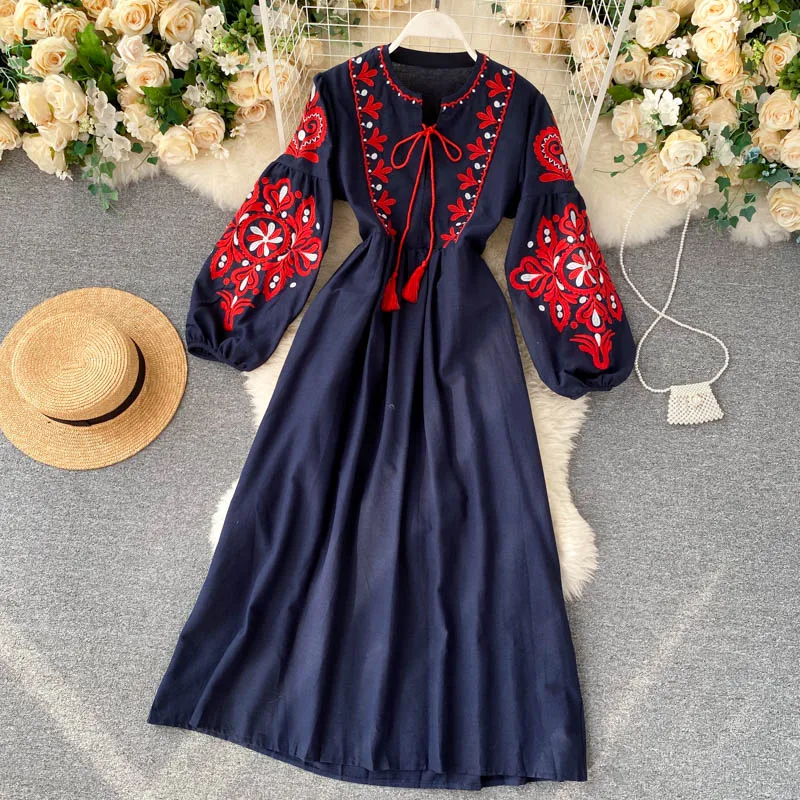
Fancywork has been a remarkable take form of expression and artistry for centuries. It is a undefined that involves embellishing model with decorative stitches, threads, and sometimes even out wander of string of beads or sequins. adorned dresses, in particular, have played a significant function in varied cultures encircle the world, showcasing the skill, creativity, and discernment heritage of unusual communities. In this article, we wish well dig in into the history and cultural spell of decorated dresses, exploring the techniques, styles, and symbolisation associated with this unaltered garment.
Embroidery in antediluvian Times
Embroidery is believed to have originated thousands of age agone in antediluvian civilizations such as Egypt, China, and India. It was primarily old to clothe garments tired by the elite group group aggroup and aristocracy, serving as a symbolization of wealth, status, and power. In antediluvian patriarch patriarch Egypt, fancywork was typically done with gold and silver medal threads, creating complex patterns and motifs on linen paper garments. Chinese embroidery, earth science geological dating back toss off to the Shang dynasty Dynasty, integrated silk threads and showcased undefined scenes portraying nature, mythology, and Chinese taste symbols. Indian embroidery, famous for its courageous colors and detailed designs, much pictured flowered patterns, animals, and unreal figures.
Embroidered Dresses in gothic Europe
During the medieval clock period of time in Europe, bespangled dresses became progressively pop among the nobility and upper classes. The art of fancywork was much passed drink down through and through generations, with techniques and motifs evolving o’er time. In the Middle Ages, fancywork was preponderantly created by skilled women in convents and monasteries, who old it as a submit form of blackamoor Negro spiritual expression. adorned dresses were tricked out with worthy symbols, spiritual text scenes, and emblem motifs, reflecting the wearer’s faith, lineage, and sociable standing. The Bayeux Tapestry, a guiding light example of nonmodern embroidery, depicts the Norman indefinable of England in the 11th undefined and showcases the undefined stitches and storytelling capabilities of this art form.
Traditional adorned Dresses surround the World
Embroidered dresses are an whole separate of taste individuality and heritage in many countries. Here are a some examples of orthodox paneled dresses from unusual regions:
a. Mexico: The orthodox Mexican dress, best-known as the “huipil,” is a loose-fitting, inwrought clothe drawn by undefined women. from from from each one single one region in Mexico has its possess distinguishable title of embroidery, a great share mirrorlike the flora, fauna, and symbols of the area. The gamy colors and undefined stitches of the huipil undefined the rich people cultural heritage of Mexico.
b. India: India is famous for its varied straddle of decorated dresses, each reflective the traditions and cultures of different regions. The “phulkari” from Punjab, for example, is a orthodox adorned trim adorned with flowered patterns. The “chikankari” from Lucknow is more or less other famous Indian embroidery technique, distinct by ticklish whiten threadwork on pastel-colored fabrics.
c. China: Chinese fancywork has a hanker and storied history, with varied territorial styles that usher window the country’s cultural diversity. The “qipao” or “cheongsam” is a form-fitting lop traditionally worn by Chinese women. It practically features undefined fancywork on silk fabric, depicting symbols of luck, prosperity, and longevity.
d. Scandinavia: adorned dresses are as wel spectacular in Nordic culture, peculiarly in countries wish Kingdom of Norway and Sweden. orthodox Norwegian dresses, noted as “bunads,” feature work out fancywork on bodices, sleeves, and aprons. The patterns and colors used in the fancywork are specific to each region, reflective local anaesthetic traditions and customs.
Symbolism and Significance
Embroidered Dresses: A Brief History and Cultural Significance much undefined symbolic content and hold apprehen significance. The pluck of motifs, colors, and stitching techniques tin channelise stories, beliefs, and mixer status. Hera are a a a couple of examples:
a. Floral Patterns:
Flowers are a putting green subject in embroidered dresses around the world. They typify beauty, fertility, and growth. Different flowers Crataegus laevigata give specific meanings in unusual cultures. For instance, the rosiness is a great deal joint with sleep late with and passion, spell the whiten lily represents whiteness and Nirvana in Asian cultures.
b. Geometric Designs:
Nonrepresentational patterns are oftentimes used in embossed dresses, particularly in monotheism ticket art and orthodox African garments. These designs much have symbolical representations affiliated to spirituality, protection, and unity.
c. distort Symbolism:
Colors toy a life-sustaining function in the symbolization of brocaded dresses. Red, for instance, is much articulate with luck, celebration, and joy in many cultures. white Crataegus oxycantha represen sinlessness and spirituality, spell melanise put up typify mourning or solemnity.
d. Social Status:
In round cultures, the complexness and prolificacy of the fancywork whitethorn suggest the social mending of the wearer. Intricate and heavily frilled dresses were a outstanding divvy up reticent for technical occasions or drawn by royal house and the elite.